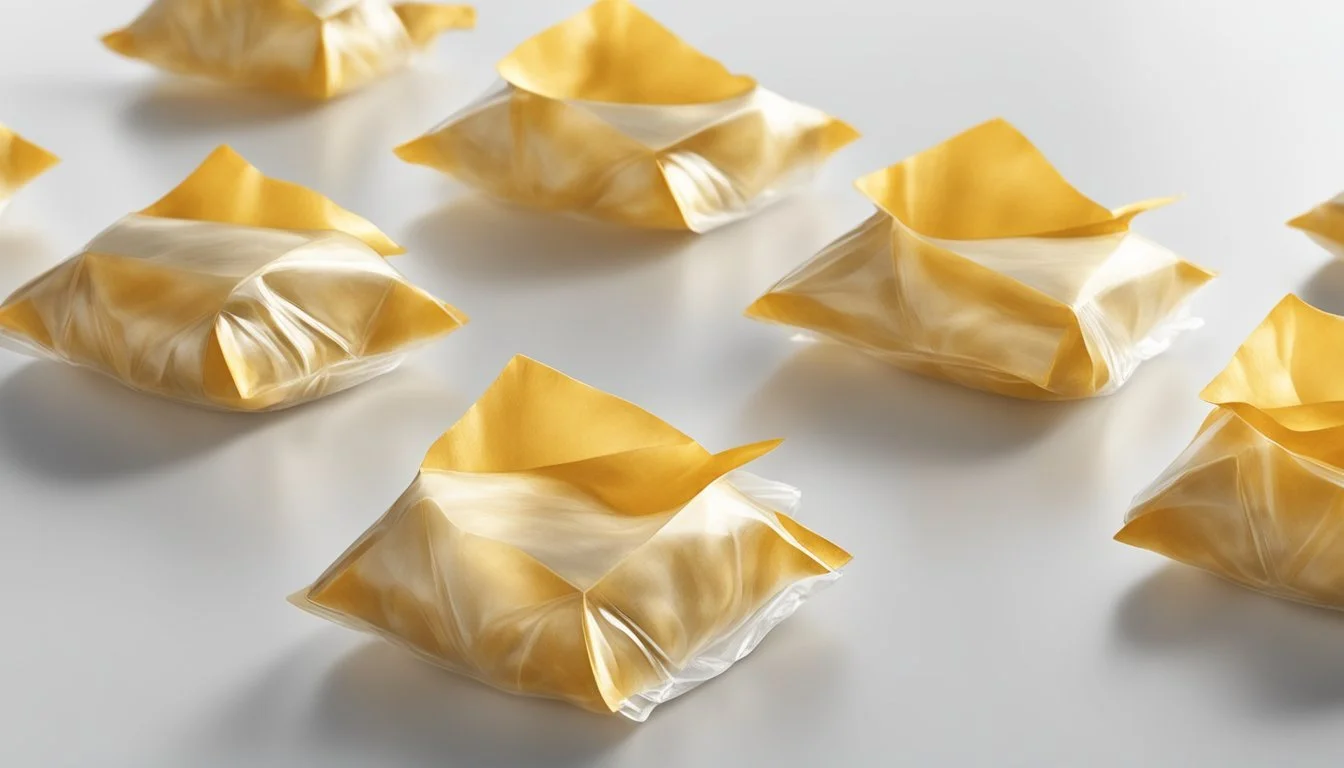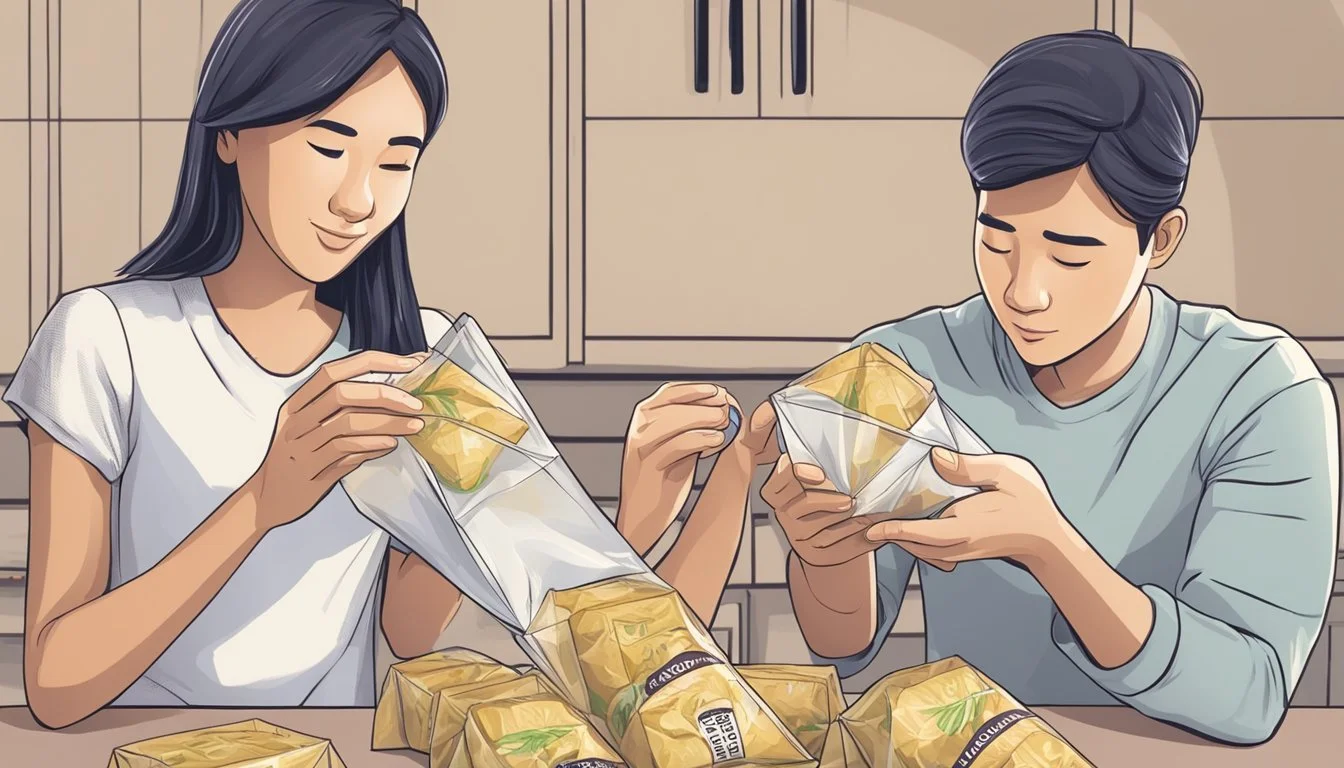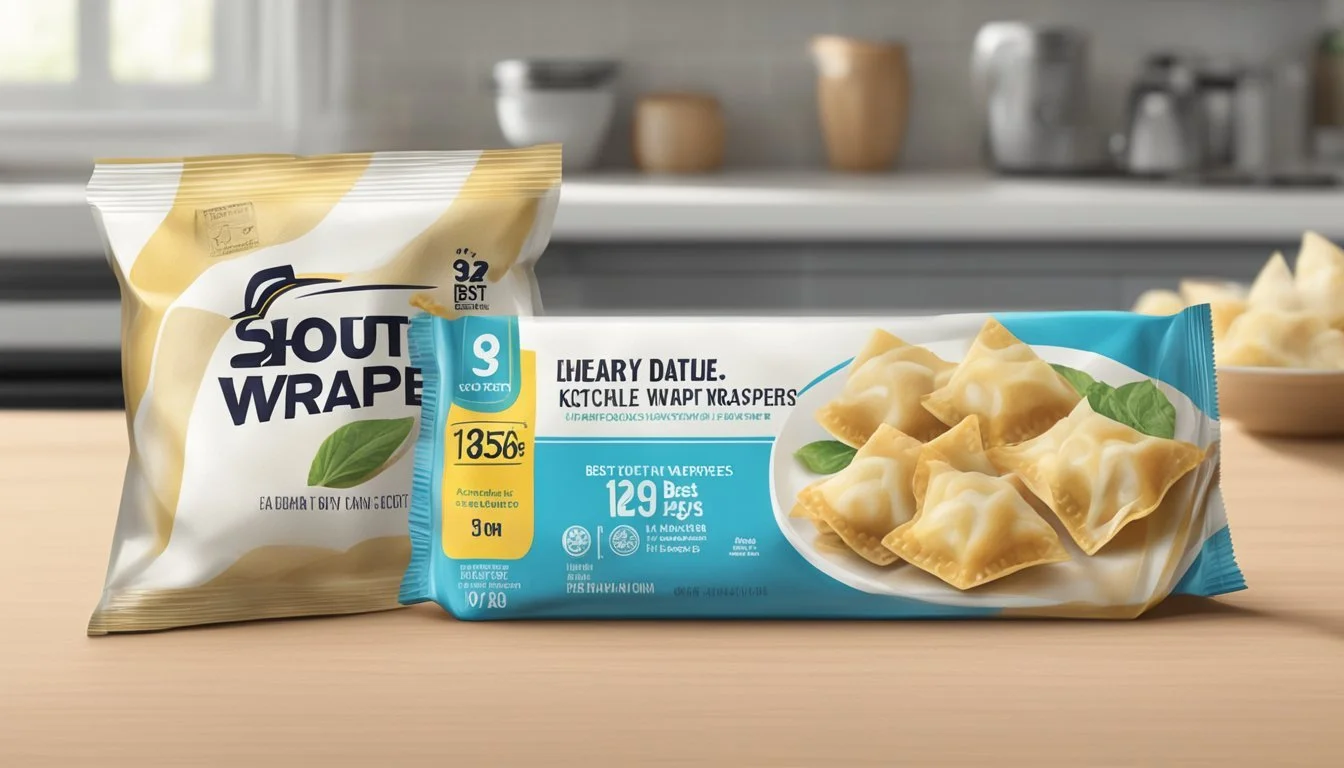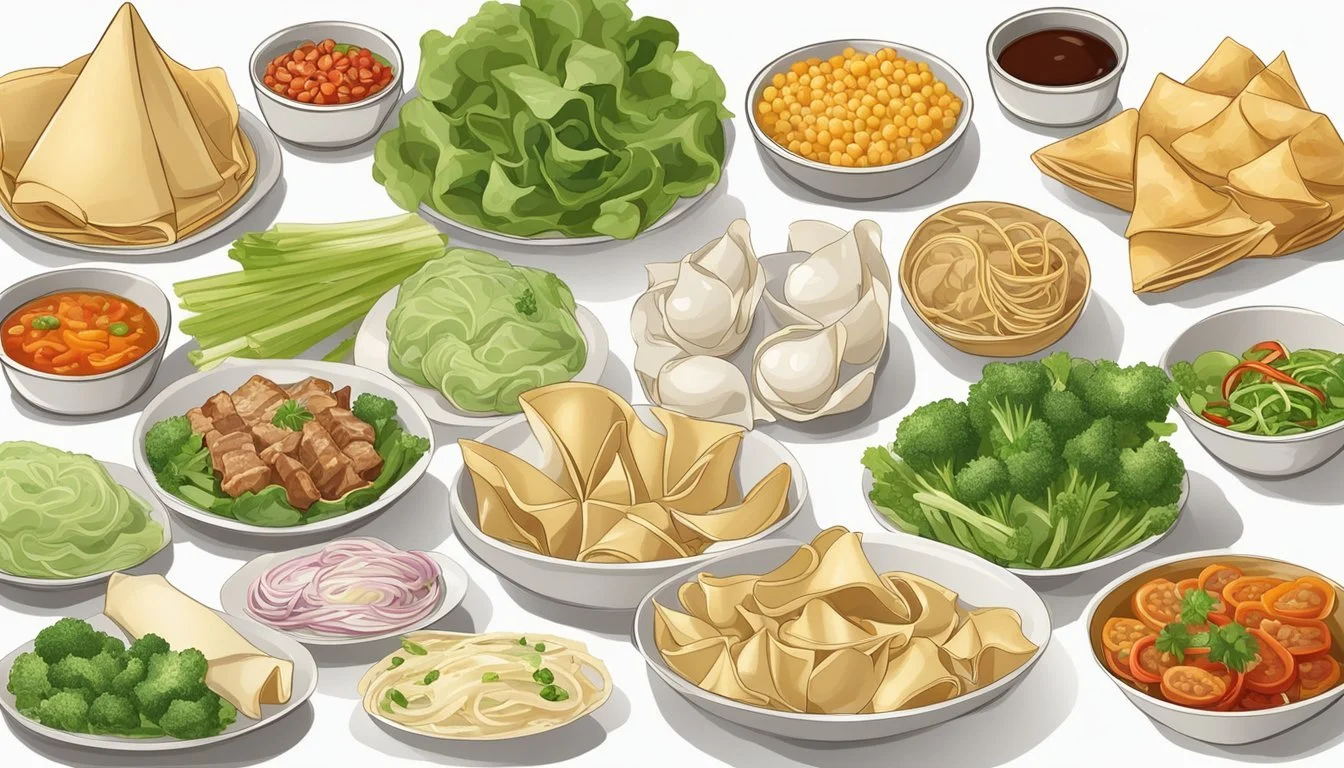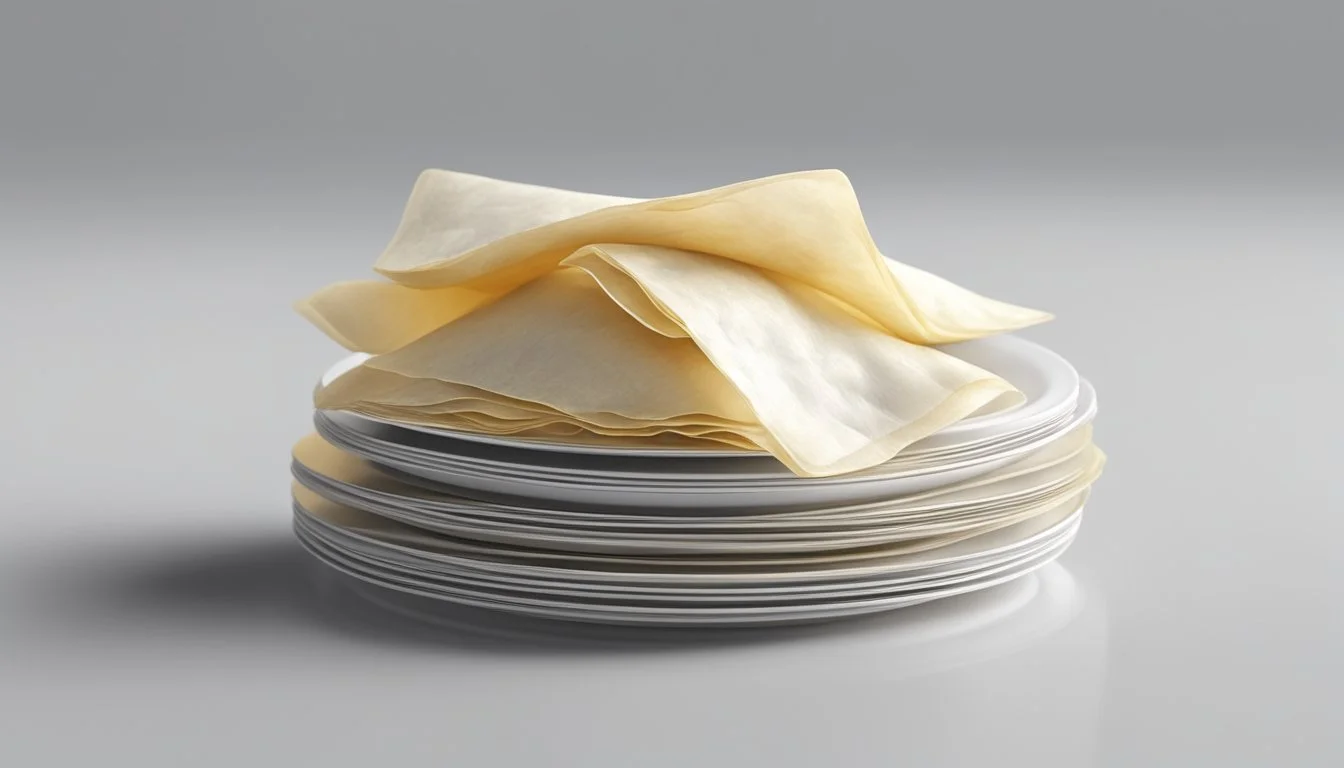How Long Do Wonton Wrappers Last?
Shelf Life and Storage Tips
Wonton wrappers are a staple ingredient in many Asian cuisines, prized for their versatility and ease of preparation. They are thin sheets of dough that can be filled with a variety of ingredients to create delicious dumplings. Their storage life can vary depending on how they are packaged and preserved. When stored correctly, wonton wrappers can have a shelf life of approximately 2 to 3 months in a cool, dry place.
For those who prefer to extend the usability of wonton wrappers, freezing offers an excellent solution. Properly wrapped and sealed, these wrappers can be kept in the freezer where they maintain their quality for up to 6 months. It's important to do so in a manner that protects them from freezer burn and preserves their texture and elasticity for future use.
Once a package of wonton wrappers is opened, the freshness duration shortens significantly. In the refrigerator, opened wonton wrappers typically remain good for 7 to 10 days. Unopened packages can last a bit longer but are still susceptible to mold if not stored under the right conditions. It’s essential to keep an eye on their condition during this time to ensure that they remain safe for consumption.
Understanding Wonton Wrappers
Wonton wrappers are a cornerstone ingredient in various Asian cuisines, serving as the delicate casing for a plethora of fillings. They play a critical role in the texture and consistency of dishes such as wontons and dumplings.
Wonton Wrapper Basics
Wonton wrappers are essentially thin sheets made from flour, egg, water, and a small amount of salt. These components are combined to form a dough, which is then rolled out into thin squares or circles. The simplicity of ingredients and production process affords wonton wrappers a degree of versatility in cooking, from boiling and deep-frying to steaming and baking.
Ingredients:
Flour: Provides structure
Eggs: Offers elasticity
Water: Binds ingredients
Salt: Enhances flavor and toughness
Shelf Life Factors
The shelf life of wonton wrappers is contingent on proper storage conditions. When kept in a cool and dry environment, they can have a considerable shelf life before showing signs of spoilage.
Refrigeration: An unopened package of wonton wrappers can last approximately 2 to 3 months in the fridge. Once opened, they should ideally be used within 7 to 10 days.
Freezing: For longer-term storage, wonton wrappers can be frozen, where they will maintain quality for up to 6 months. It's advisable to store them in short stacks, often wrapped in plastic and secured in a resealable zip-top bag to prevent freezer burn and facilitate easy removal.
Factors affecting shelf life include exposure to air and moisture, which can hasten deterioration. Mold growth can occur more rapidly once the package is opened, making it essential to seal and store wonton wrappers properly after use.
Storage Guidelines
Effective storage of wonton wrappers is key to preserving their freshness and extending their shelf life. They should be kept in a cool, dry environment, and once opened, stored with care to prevent spoilage.
Refrigerating Wonton Wrappers
In the refrigerator, unopened wonton wrappers typically last for 2 to 3 months. To store opened wrappers, one should place them in an airtight container or wrap them securely in plastic wrap to prevent them from drying out. They can last for approximately 7 to 10 days when refrigerated under these conditions.
Freezing Wonton Wrappers
For longer storage, wonton wrappers can be frozen for up to 6 months. Place parchment paper between the wrappers to prevent them from sticking together, and store them in a Ziploc bag or an airtight container before placing in the freezer. This preserves their quality and prevents freezer burn.
Signs of Spoilage
When inspecting wonton wrappers for spoilage, it's essential to check for changes in appearance, smell, and texture.
Visual Inspection
An immediate sign of spoilage in wonton wrappers is the presence of mold. If one spots fuzzy spots or discoloration, ranging from white to green, this indicates mold growth and the product should be discarded. The color of fresh wonton wrappers should be consistent; any variation could suggest spoilage. When wrappers become dried out, they may appear brittle or cracked, which also means they are no longer suitable for use.
Scent and Texture Checks
Spoiled wonton wrappers may emit an off smell, usually a sour or yeasty odor, which is a clear indicator of spoilage. The texture is equally telling; while fresh wonton wrappers are pliable, a soggy or unusually sticky texture suggests they've been compromised. One should refrain from using wrappers that have experienced a notable change in texture.
Safe Handling and Usage
Handling wonton wrappers correctly ensures maximum freshness and safety. The user must pay close attention during preparation, cooking, and storage to prevent food spoilage and contamination.
Preparation and Cooking
Before using wonton wrappers, cooks should ensure their hands and surfaces are clean to avoid introducing contaminants. During preparation, if the wrappers dry out, they can be lightly dusted with flour and kept under a damp cloth to maintain flexibility.
While cooking, whether one is making egg rolls, dumplings, ravioli, or other appetizers (What wine goes well with appetizers?), it is essential to ensure that the filling is cooked thoroughly. For items requiring cooking in boiling water, such as dumplings, they should remain in the water until fully cooked, often indicated by the wrappers becoming translucent and the dumplings floating to the top.
Food Poisoning Prevention
To mitigate the risk of food poisoning, it’s critical that wonton wrappers, especially if homemade, are stored properly – in a cool and dry place or refrigerated. Ingredients for the filling should be fresh and cooked to the appropriate temperature. After cooking any recipes involving wonton wrappers, such as appetizers, they should be consumed immediately or stored at the right temperature to avoid bacterial growth.
One should never use wrappers that show signs of mold or have an off smell. When consuming fillings that include perishable ingredients, like meats or cheeses, ensuring they reach a safe internal temperature is key to prevention of foodborne illnesses.
Maximizing Freshness and Taste
To ensure that wonton wrappers maintain their quality and flavor, proper storage techniques are critical. Attention to airtight conditions and prevention of freezer burn are key aspects in preserving the wrappers for future use.
Airtight Storage
Wonton wrappers need to be kept in airtight conditions to prevent them from drying out and to maintain their texture. Once the original packaging is opened, they should be transferred to an airtight container or resealed with a vacuum seal to keep air exposure to a minimum. Incorporating an additional layer of protection by wrapping the wrappers in plastic wrap can be helpful before placing them in the container.
Do Not:
Leave wrappers exposed to air
Store in damp environments, which could also lead to spoilage
Prevent Freezer Burn
When storing wonton wrappers in the freezer, it's important to guard against freezer burn, which can deteriorate their quality and taste. To achieve this:
Wrap the wrappers tightly with plastic wrap.
Place them in a heavy-duty freezer bag with excess air pressed out.
Alternatively, freeze them using a vacuum-sealed bag to prevent ice crystal formation.
For optimal results, a thin dusting of starch such as cornstarch can be used between the wrappers to prevent sticking without adding significant calories.
Creative Uses for Wonton Wrappers
Wonton wrappers offer a versatile base for a myriad of recipes, ranging from traditional Asian dishes to innovative Western-inspired appetizers. These thin dough sheets can transform into delicious dumplings, crisp tartlets, and more with just a few simple culinary twists.
Alternative Recipes
Wonton wrappers excel far beyond their conventional use in wonton soup. They can be crafted into tortellini by filling them with cheeses, meats, or vegetables and folding them into the classic Italian shape. Cooks may simmer these stuffed wrappers in a savory broth or serve them with a sauce of their choice.
Moreover, wonton wrappers are perfect for fried wontons, a crunchy snack that can be enjoyed on its own or dipped into a sweet and sour sauce. Recipes from websites like Allrecipes guide users through the steps for filling and folding wontons to ensure they come out perfectly crispy every time.
Innovative Appetizers
Creative cooks are using wonton wrappers to make unique and tasty appetizers that impress at any gathering. One popular method is to press the wrappers into muffin tins to create tartlets. These can be filled with a mixture of ingredients, such as a taco-inspired filling complete with seasoned meat and melted cheese.
Alternatively, leftover wonton soup can inspire bite-sized creations. Leftover wonton soup filling can be repurposed to stuff wonton wrappers before frying or baking, giving life to a delicious appetizer that reduces food waste and tickles the taste buds.
Wonton Wrapper DIY
Making one's own wonton wrappers is a straightforward process that allows for customization and ensures freshness. The essentials of making these wrappers at home include a reliable recipe and proper wrapping techniques to achieve that signature elastic texture and keep fillings secure.
Homemade Wonton Wrapper Recipe
To make homemade wonton wrappers, one needs basic ingredients, which are usually available in most pantries:
All-purpose flour: This is the base of the dough, providing structure.
Water: It is combined with flour to form the dough.
Salt: A pinch to enhance the flavor.
Cornstarch: A dusting helps prevent the wrappers from sticking together.
A simple process guides the preparation:
Mix the all-purpose flour with a pinch of salt.
Gradually add water while stirring to form a smooth dough.
Knead the dough until it becomes elastic and smooth.
Rest the dough, covered with a cloth, to allow the gluten to relax.
Roll out the dough using a rolling pin, aiming for a thickness of about 1-2 millimeters.
Cut into squares or circles as per preference.
For those who prefer an even more elastic texture, a pastry brush can be used to coat the edges of the wonton wrappers with a beaten egg, which helps seal the wrappers when folding.
Wrapping Techniques
Once the dough is prepared and cut into desired shapes, it's time to master the art of wrapping. Here are steps to ensure the fillings stay secured within the wonton wrappers:
Place a teaspoon of filling in the center of a wrapper.
Moisten the edges with water or a beaten egg using a pastry brush to act as a glue.
Fold the wrapper to form the desired shape, ensuring no air remains trapped with the filling.
Press the edges firmly to seal.
Popular folding styles include the triangle, the pouch, and the classic wonton shape, which resembles a nurse's cap. Regardless of the method chosen, it is imperative to ensure the wrappers are sealed well to prevent the filling from leaking during cooking.
Handling Store-Bought Wonton Wrappers
When purchasing store-bought wonton wrappers, it is essential to pay attention to the expiration date on the package and to store them correctly to maintain their quality.
Expiration Dates and Rotation
Every package of store-bought wonton wrappers comes with an expiration date, often referred to as the "due date." The expiration date is a guideline for the freshness of the product. It is crucial for consumers to check this date while at the grocery store and select the package with the furthest due date. After purchase, one should place the newer packages of wonton wrappers behind the older ones, ensuring a proper rotation system in the refrigerator.
Storing Opened Packs
Once a package of wonton wrappers is opened, the shelf life can decrease. Here's how to handle opened packs:
Transfer the unused wrappers to an airtight container or resealable plastic bag.
Press out excess air before sealing to limit moisture exposure.
For longer-term storage, place short stacks of wonton wrappers separated by parchment paper in the container to avoid sticking.
Label the container with the current date to keep track of how long the opened pack has been stored.
Storing opened packs in the refrigerator can extend their freshness for up to a week, whereas freezing can preserve them for several months.
Freezing and Defrosting
Proper freezing and thawing techniques ensure the longevity and quality of wonton wrappers, extending their shelf life significantly. Implementing these methods can maintain the wrappers' freshness when they are not needed immediately.
How to Freeze Wonton Wrappers
To freeze wonton wrappers, one should follow these specific steps:
Separate: Place a sheet of wax paper or sprinkle a thin layer of cornstarch between individual wrappers to prevent sticking.
Package: Wrap the separated stacks securely in plastic wrap.
Seal: Store them in an airtight container or a freezer bag to protect against freezer burn and odors.
Label: Clearly mark the container or bag with the current date for future reference.
Freezing wonton wrappers in this manner can keep them viable for up to 9 months; however, for best quality, use between 3 to 6 months.
Thawing Procedures
When it comes to defrosting frozen wonton wrappers, the following steps should be taken:
Cold Water Bath: Submerge the frozen wrappers in cold water for 10-15 minutes to thaw gradually.
Refrigeration: Alternatively, one can defrost the wrappers in the refrigerator for several hours or overnight.
Upon being defrosted, wonton wrappers should be used promptly or stored in the refrigerator for short-term use. It is crucial to avoid refreezing previously thawed wrappers to maintain their quality and avoid spoilage.
Wonton Wrapper Health and Nutrition
When considering the health and nutrition of wonton wrappers, it's important to examine the specifics of their nutrient content, as well as potential food allergens and how they align with various dietary needs.
Nutritional Information
Wonton wrappers, typically made of flour, water, eggs, and salt, provide a basic carbohydrate element to dishes and contain minimal fats and proteins. A general nutritional breakdown per individual wonton wrapper is as follows:
Calories: Ranges from 15 to 25, depending on size
Carbohydrates: Approximately 4 grams
Protein: Roughly 1 gram
Fat: Less than 1 gram
Fiber: Usually insignificant amounts
These wrappers are primarily composed of simple carbohydrates and serve as a vessel for other, more nutrient-dense fillings such as pork, chicken, shrimp, and vegetables like cabbage and green onions.
Allergens and Dietary Considerations
Wonton wrappers often contain egg, making them unsuitable for those with egg allergies or those following a vegan diet. For individuals avoiding gluten, it's important to note that traditional wonton wrappers are not gluten-free as they are made from wheat flour. However, gluten-free options may be available at certain retailers or can be homemade with alternative flours.
Wonton wrappers do not typically contain meat, so they are suitable for vegetarian diets assuming no animal-derived ingredients like lard are used in the dough. When filled with a combination of vegetables only, they can be a part of plant-based dietary patterns.
Handling and preparation of wonton wrappers should also consider food safety to avoid bacterial growth, such as that caused by inappropriate storage. Wrappers should be stored properly either in the refrigerator or freezer and used within recommended time frames.
Troubleshooting Common Issues
When working with wonton wrappers, specific problems such as breakage and moisture can affect their quality. Addressing these issues promptly ensures that your wrappers remain in the best condition for making delicious dishes.
Preventing Wrapper Breakage
Wonton wrappers can become brittle and are prone to breakage if not handled with care. To prevent this:
Store at the Correct Temperature: Keep them in the refrigerator, well-sealed, to maintain flexibility.
Room Temperature Handling: Before use, allowing wrappers to sit at room temperature for a few minutes can make them more pliable and less likely to tear.
Gentle Separation: When separating the wrappers, do so gently to avoid tearing the delicate sheets.
Dealing With Moisture Issues
Moisture either too little or too much, poses problems for wonton wrappers:
Avoid Damp Conditions: Prepared wontons should be kept in a dry environment before cooking to prevent them from becoming damp and soggy.
Humidity Control: If the environment is too dry, the wrappers can become too hard. To moisten them, you can cover the wrappers with a damp cloth for a short period until they reach the desired suppleness.
Proper Storage: For uncooked fillings that might release moisture, it is advisable to freeze the prepared wontons instead of refrigerating to preserve their shape and texture.


